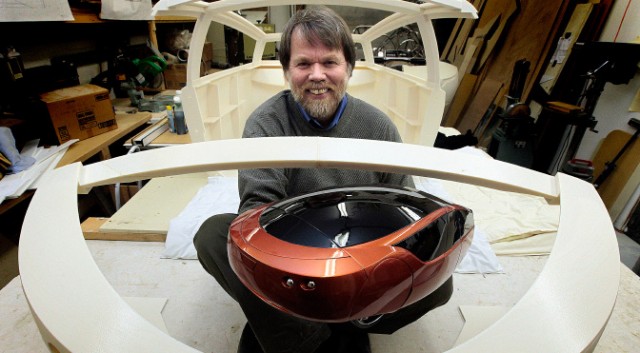Additive Manufacturing Takes to the Highway

For decades the automotive industry has designed every facet of its cars' inner workings around a heavy steel body. But as four-cylinder options become more powerful, bigger engines have fallen by the wayside, ushering in an age of smaller, more efficient vehicles.
Helping this movement along its way is Jim Kor and his urban runabout, Urbee 2, which has employed 3D printing to make an ultra-lightweight option for city driving.
Rather than designing an engine to fit a heavy frame, the Urbee designers were free focus on squeezing the most miles per gallon out of a small, hyper-efficient motor.
The secret to Urbee's eco-friendly design is an aerodynamic, lightweight body created through Fused Deposition Modeling (FDM) – a type of additive manufacturing that creates an ABS plastic frame layer by layer through sprayed molten polymer.
The whole 10-foot-long car takes about 2,500 hours to manufacture, but doesn't require any personnel to oversee the production of each part. As a result, Kor need only upload a design to the 3D printer at Redeye's on-demand facility to create a bumper or car door – no human supervision necessary.
Aside from weight reduction, FDM benefits Urbee's design by allowing for a degree of precision unavailable with sheet metal. Specifically, certain areas of the body that need extra rigidity (such as a bumper) can have extra material added in key locations until it is as resilient (but much lighter) than that of an ordinary sedan.
3D printing also allows a typical car's multitude of parts to be consolidated into a single, unibody shape. But while this will save material and help to create stronger car parts, there are practical concerns with building unibody components. Most notably, if one part of a large component breaks, the entire piece must be reprinted.
As a result, Kor and his team of engineers are working on a stronger alternative to FDM to ensure that, no matter what, Urbee's bumpers will be just as strong as those of a regular production car.
Although Urbee may be small enough to technically be considered a motorcycle in several states and countries, Kor's aspirations are big. Once enough funding comes in, Urbee's head engineer hopes to set a world record by driving the latest prototype form San Francisco to New York on only 10 gallons of gas.
Full story at Wired










